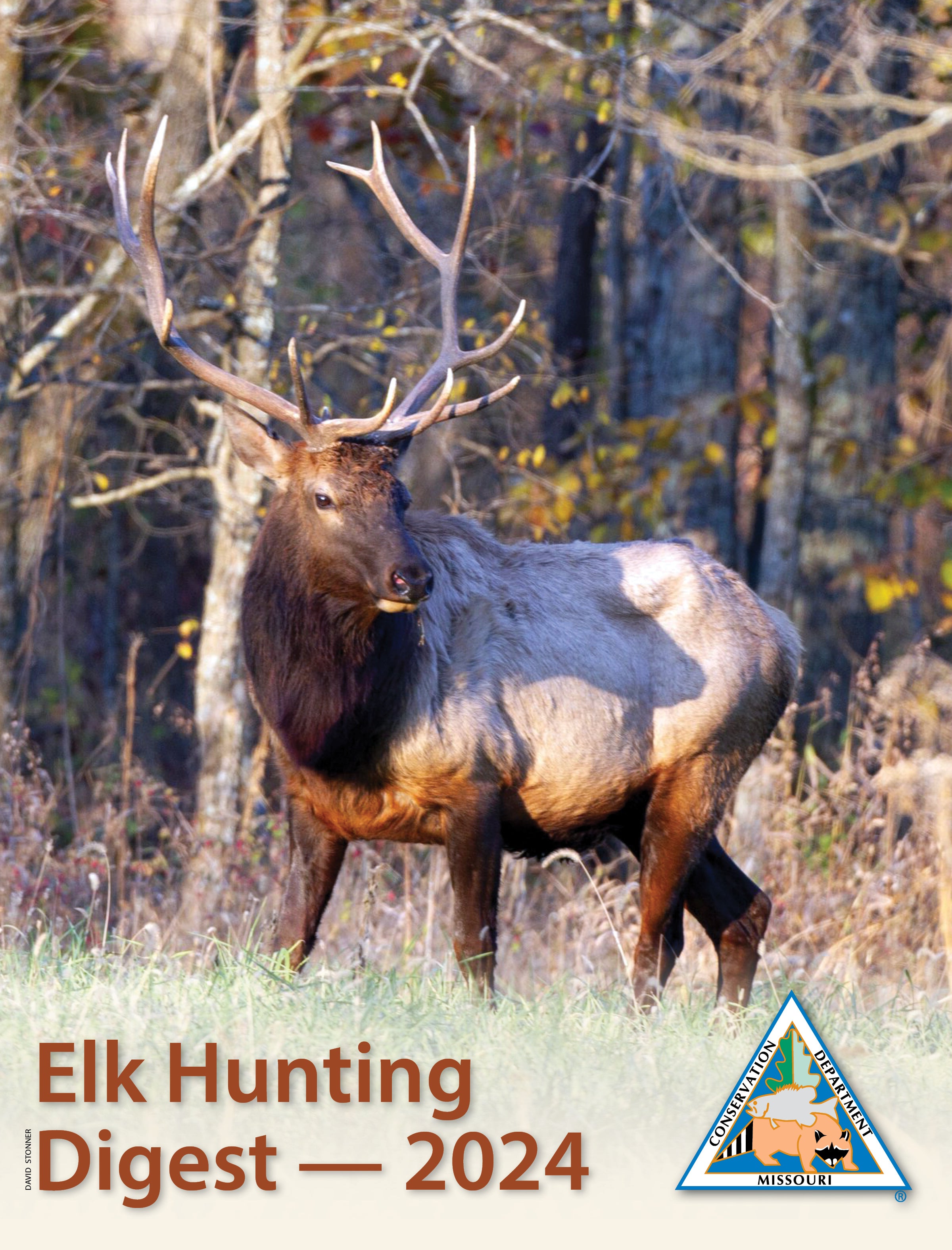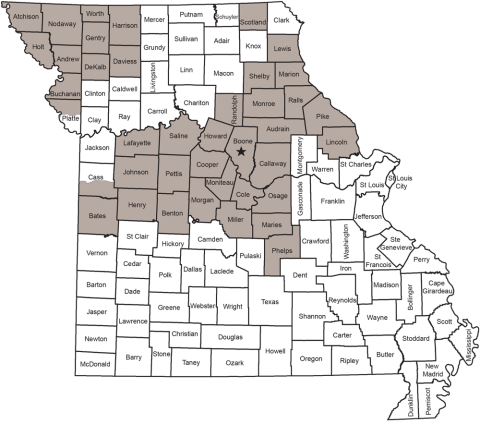General Hunting Regulations
Methods
Seasons, permits, and species have specific rules governing the type of firearm, bow, atlatl, and slingshot that may be used to hunt. Review the information in those areas before hunting.
Fully automatic weapons are prohibited for all hunting.
Firearm restrictions during deer firearms season
During the November portion statewide, and the antlerless and CWD portions in open counties, other wildlife may be hunted only with a shotgun and shot not larger than No. 4 or a .22 or smaller caliber rimfire rifle. This does not apply to waterfowl hunters, trappers, landowners on their land, or to elk hunters during the firearms portion of the elk season.
If you are hunting furbearers during daylight hours during firearms deer season, only deer hunting methods may be used.
Firearm restrictions during elk firearms portion
During the firearms portion of the elk hunting season in open counties, other wildlife may be hunted only with a shotgun and shot not larger than No. 4 or a .22 or smaller caliber rimfire rifle. This does not apply to waterfowl hunters, trappers, landowners on their land, or to deer hunters during the antlerless portions of the firearms deer season. .
Poisons, tranquilizing drugs, chemicals, and explosives
Poisons, tranquilizing drugs, chemicals, and explosives may not be used to take wildlife.
Motor driven transportation
Motor driven transportation may not be used to take, drive or molest wildlife.
A motorboat may be used to hunt wildlife, except bear, deer and elk, if the motor is shut off and the boat’s forward progress has stopped.
All-terrain vehicles (ATVs)
It is illegal for anyone (except landowners and lessees on land they own or lease and certain agricultural workers) to drive all-terrain vehicles (ATVs) in Missouri’s streams and rivers unless the ATV is on a crossing that is part of the highway system. Violators could lose their fishing and hunting privileges.
With limited exceptions, all-terrain vehicle use is prohibited on conservation areas. Other vehicles are restricted to graveled and paved roads and established parking areas, unless otherwise posted.
Artificial lights
Artificial lights may be used to hunt:
- bullfrogs
- green frogs
- raccoons and other furbearing animals when treed with the aid of dogs
- coyotes from February 1 – March 31 in conjunction with other legal hunting method
Landowners may use artificial lights on their property, but while doing so may not be in possession of — or be in the company of someone who possesses — a firearm, bow, or other implement used to take wildlife.
Artificial lights may not be used to search for, spot, illuminate, harass, or disturb other wildlife than the above.
Night Vision and Thermal Imagery
You may not possess night vision or thermal imagery equipment while carrying a firearm, bow, or other implement used to take wildlife, except:
- To take coyotes from February 1 – March 31 in conjunction with other legal hunting methods
- For the purposes of killing feral swine by landowners or their authorized representatives on the landowner’s property
- With written authorization of an agent of the department
Calls
Mouth and hand calls may be used any time.
Electronic calls or electronically activated calls may be used to pursue and take crows and furbearers. They may also be used to take light geese during the Conservation Order. Electronic calls may not be used with artificial light or night-vision equipment, except when hunting coyotes from February 1 – March 31 in conjunction with other legal hunting methods.
Dogs
Dogs may be used in hunting wildlife — except bear, deer, elk, turkey, muskrat, mink, river otter, and beaver. Learn more about the rules for hunting with dogs.
During a hunt
Furbearer dens or nests
The dens or nests of furbearers shall not be molested or destroyed.
Hunter orange
For your safety, you are urged to wear hunter orange whenever you are hunting. You are required to wear hunter orange at certain times and locations. Learn more about the hunter orange rules.
Hunting near flood waters or fire
Wildlife, except waterfowl, may not be pursued or taken while trapped or surrounded by floodwaters or while fleeing from floodwaters or fire.
Hunting and trapping on public roadways
You may not take any wildlife from or across a public roadway with a firearm, bow or crossbow. A Conibear-type trap may be used adjacent to public roadways only if set underwater in permanent waters.
After a successful hunt
Excessive waste
It is illegal to intentionally leave or abandon any portion of any wildlife that is commonly used as human food.
Possessing, transporting, and storing wildlife
You must keep any wildlife you take separate or identifiable from that of any other hunter.
You can possess and transport wildlife as part of your personal baggage. It may be stored at your home, camp, place of lodging or in a commercial establishment.
Proper labeling
When storing bear, deer, elk, and turkey, it must have the hunter's:
- Full name
- Address
- Date taken
- Telecheck confirmation number
When storing wildlife other than bear, deer, elk, or turkey, it must have the hunter’s:
- Full name
- Address
- Permit number
- Species
- Date it was placed in storage
When transporting wildlife other than bear, deer, elk, or turkey, it must have the hunter’s:
- Full name
- Address
- Permit number
- Date it was taken
Buying and selling pelts, feathers, and other parts
Unless federal regulations prohibit, you may buy, sell or barter legally obtained:
- feathers
- squirrel pelts
- rabbit pelts
- groundhog pelts
- turkey bones
- turkey heads
- turkey feet
- deer heads (except those acquired with a disposition form)
- elk heads (except those acquired with a disposition form)
- deer and elk antlers
- deer and elk hides
- deer and elk feet
- NOTE: Regardless of the state of harvest, black bear gallbladders may not be bought, sold, offered for sale, transferred, or given away. Extracted black bear gallbladders may not be transported into or within Missouri.
They must be accompanied by a bill of sale showing:
- the seller’s full name, address
- the number and species of the parts
- the full name and address of the buyer
Wildlife and wildlife parts, after mounting or tanning, also may be bought and sold.
People who receive or purchase deer or elk heads or antlers attached to the skull plate must keep the bill of sale as long as the heads or antlers are in their possession. The bill of sale must include the transaction date and a signed statement from the sellers attesting that the deer or elk heads and antlers were, to their knowledge, taken legally.
Giving away wildlife
You may give wildlife (excluding bear gall bladders) to another person, but it will continue to be a part of your daily limit for the day when taken. Wildlife received as a gift will be included in the possession limit of the person you give it to.
Bear, deer, elk, and turkey must be properly labeled as outlined above.
All other wildlife being given away must be labeled with:
- your full name
- address
- permit number
- species
- date taken








































